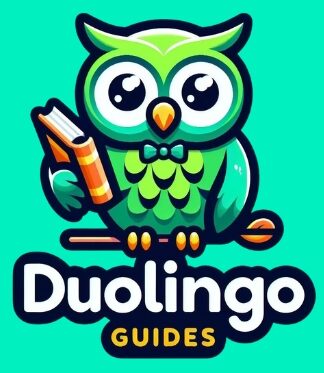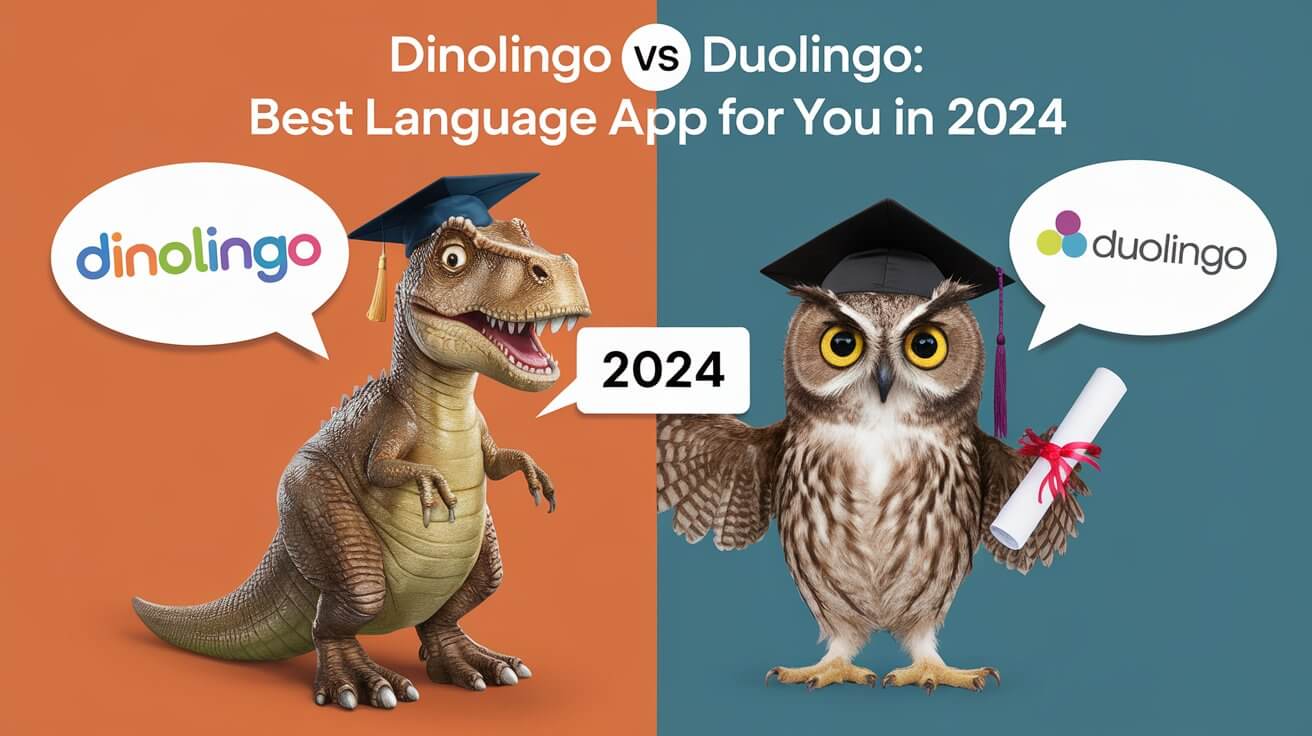Choosing a language learning app can feel overwhelming. Dinolingo and Duolingo stand out from the crowd, but they serve different needs. Dinolingo targets kids aged 2-14 with games across 50 languages. Duolingo aims at teens and adults, offering 41 languages through gamified lessons. This breakdown spotlights key differences to help you pick the best fit for your language journey.
Key Differences Between Dinolingo and Duolingo
Target Audience
Dinolingo zeroes in on young learners. It’s designed for kids aged 2 to 14, making language learning fun and engaging for little ones. The colorful characters and playful interface grab children’s attention and keep them hooked.
Duolingo, on the other hand, aims at teens and adults. While kids can use it, the content and design suit older learners better. It’s a go-to app for anyone 13 and up looking to pick up a new language.
Available Languages
When it comes to language options, both apps offer a wide range. Dinolingo boasts an impressive 50 languages, giving kids a chance to explore lesser-known tongues. This variety is great for families with diverse backgrounds or those wanting to expose their children to multiple languages.
Duolingo isn’t far behind, with 40 languages on offer. While slightly fewer than Dinolingo, it still covers most popular languages and even some constructed ones like Klingon for the Star Trek fans out there.
Learning Approaches
Dinolingo takes a kid-centric approach. It uses songs, stories, and games to teach language naturally. This method mimics how children learn their first language, making it easier for young minds to grasp new concepts.
Duolingo employs gamification to make learning addictive. Its bite-sized lessons, point system, and streak counters motivate users to practice daily. This approach works well for older learners who enjoy a sense of progress and achievement.
Pricing Models
Money matters when choosing an app. Dinolingo operates on a subscription model. It costs $19 per month or $199 annually. This might seem steep, but it allows up to six users per account, making it cost-effective for families.
Duolingo offers a free version with ads and a premium tier called Super Duolingo. The free version gives access to all courses, while Super Duolingo removes ads and adds features like offline lessons. It costs $7.99 monthly, less than of Dinolingo’s price.
Dinolingo: A Closer Look
Features Tailored for Children
Dinolingo shines in its child-friendly design. The app is bursting with colorful animations and lovable characters that guide kids through lessons. It’s like stepping into a cartoon world where learning happens naturally.
The platform offers over 30,000 learning activities. These include interactive games, sing-along songs, and engaging videos. Such variety keeps children interested and prevents boredom, a common hurdle in language learning.
Curriculum and Lesson Structure
Dinolingo’s curriculum is age-appropriate and comprehensive. It covers essential vocabulary, basic grammar, and cultural insights. Lessons are structured to build on each other, ensuring steady progress.
A typical lesson might start with a fun video introducing new words. Then, kids practice these words through games. Finally, they might sing a song using the new vocabulary. This multi-faceted approach reinforces learning in an enjoyable way.
Parent Involvement and Progress Tracking
Parents play a crucial role in Dinolingo’s learning model. The app provides tools for parents to monitor their child’s progress. Regular reports show which areas need more attention and celebrate achievements.
Dinolingo also offers printable worksheets and offline activities. These allow parents to engage in the learning process, turning language acquisition into a family activity.
Duolingo: In-Depth Analysis
Gamification Elements
Duolingo’s success largely stems from its gamified approach. Lessons feel like playing a game, with points, levels, and rewards. This system taps into the user’s competitive spirit and desire for achievement.
The app uses a “streak” feature, encouraging daily practice. Users earn virtual currency (Lingots or Gems) for completing lessons, which they can spend on bonus skills or fun outfits for the Duolingo owl mascot.
Course Variety and Depth
Duolingo offers a structured path through each language. Courses typically start with basic vocabulary and grammar, gradually increasing in complexity. The app adapts to the user’s pace, revisiting concepts that need more practice.
Beyond standard lessons, Duolingo provides Stories (for some languages) to improve reading comprehension. These interactive stories use the learned vocabulary in context, helping users understand how the language is used in real-life situations.
Community Features and Leaderboards
One of Duolingo’s strengths is its community aspect. Users can join leagues, competing with others to earn the most points. This social element adds motivation and a sense of belonging to a global community of language learners.
The app also has discussion forums where users can ask questions, share tips, and connect with native speakers. This feature turns language learning into a collaborative experience, enhancing engagement and retention.
Effectiveness of Dinolingo and Duolingo
Age-Appropriate Learning
Dinolingo excels in providing age-appropriate content for children. Its lessons are designed to match the cognitive abilities of young learners, using repetition and multi-sensory inputs to aid memory.
Duolingo, while not specifically designed for children, offers a learning experience that suits teens and adults well. Its short lessons cater to busy schedules and shorter attention spans common in older learners.
Long-Term Language Retention
Both apps use spaced repetition to improve long-term retention. Dinolingo achieves this through varied activities that revisit learned content in different contexts. Duolingo uses an algorithm to determine when users need to review certain words or concepts.
However, neither app can guarantee fluency on its own. They work best as supplements to other learning methods or as starting points for language exploration.
User Engagement and Motivation
Dinolingo keeps children engaged through its colorful world and diverse activities. The constant variety prevents monotony, a key factor in maintaining young learners’ interest.
Duolingo’s streak system and gamification elements prove highly effective in motivating adults. The fear of losing a streak or dropping in league rankings often pushes users to practice daily, forming a consistent learning habit.
Accessibility and User Experience
Mobile App Functionality
Both Dinolingo and Duolingo offer mobile apps, making learning on-the-go easy. Dinolingo’s app is designed with larger buttons and simpler navigation, suitable for children’s motor skills.
Duolingo’s mobile app mirrors its web version closely. It’s intuitive and responsive, allowing users to squeeze in quick lessons during commutes or short breaks.
Desktop Platform Comparison
Dinolingo provides a robust desktop experience, beneficial for longer learning sessions at home. The larger screen space allows for more immersive games and activities.
Duolingo’s web version offers additional features like a words list and more detailed progress tracking. It’s particularly useful for typing exercises and longer translations.
Offline Learning Options
Offline access can be crucial for consistent learning. Dinolingo offers downloadable content and printable materials, allowing learning to continue without an internet connection.
Duolingo’s offline mode is available only for premium users. It allows downloading lessons for later use, a handy feature for travelers or those with unreliable internet.
Pricing Comparison: Dinolingo vs Duolingo
Free vs Paid Features
Dinolingo doesn’t offer a free version but provides a 7-day trial. All features are included in the paid subscription, ensuring full access to all content and tools.
Duolingo’s free version includes all language courses but shows ads. The paid version, Super Duolingo, removes ads and adds features like unlimited hearts (attempts) and offline access.
Subscription Plans and Family Options
Dinolingo’s subscription covers up to six users, making it a good value for families. At $19 monthly or $199 annually, it’s pricier but offers specialized content for children.
Duolingo’s Super Duolingo costs $7.99 monthly or $47.99 annually. While it’s for individual use, the lower price makes it accessible to a wider audience.
Value for Money Analysis
For families with young children learning languages, Dinolingo offers good value despite the higher price. The child-specific content and multi-user access justify the cost.
Duolingo provides excellent value for individual learners, especially considering its free tier. Even the paid version is reasonably priced for the features it offers.
User Reviews and Testimonials
Dinolingo User Experiences
Parents often praise Dinolingo for its engaging content. Many report their children enjoying the lessons and retaining vocabulary better than with other methods. The variety of activities receives particular appreciation.
Some users note that older children might outgrow the app quickly. A few mention technical glitches, though these seem to be infrequent.
Duolingo Success Stories
Duolingo boasts numerous success stories from users who’ve achieved significant language proficiency. Many appreciate the app’s ability to make daily practice a habit.
Users often highlight the app’s effectiveness for building a basic vocabulary and grammar foundation. However, some note its limitations in developing advanced speaking skills.
Common Criticisms and Limitations
Dinolingo faces criticism for its lack of a free version and relatively high price point. Some users feel the content could be updated more frequently.
Duolingo receives some complaints about its heart system, which limits mistakes in the free version. Advanced learners sometimes find the lessons too basic or repetitive.
Supplementary Resources and Tools
Dinolingo’s Additional Materials
Dinolingo offers a range of supplementary resources. These include printable flashcards, coloring pages, and worksheets. Such materials extend learning beyond screen time and involve parents in the process.
The platform also provides cultural information, helping children understand the context of the languages they’re learning. This holistic approach aids in developing a broader appreciation for different cultures.
Duolingo’s Expanded Ecosystem
Duolingo has expanded its offerings beyond the main app. Duolingo Stories improve reading comprehension, while Duolingo Podcasts (available for some languages) help with listening skills.
The Duolingo English Test, accepted by many institutions, is another valuable addition to their ecosystem. It provides a practical goal for English learners using the platform.
Choosing Between Dinolingo and Duolingo
Factors to Consider
When deciding between Dinolingo and Duolingo, consider:
- Age of the learner
- Budget
- Learning style preferences
- Desired languages
- Long-term language goals
Ideal User Profiles
Dinolingo suits:
- Families with young children
- Parents wanting to introduce multiple languages early
- Educators teaching languages to young learners
Duolingo is ideal for:
- Teens and adults
- Self-motivated learners
- Those wanting a free or low-cost option
- Casual learners or those starting their language journey
Combining Both Platforms
For families with diverse age groups, using both platforms can be beneficial. Younger children can start with Dinolingo, while older family members use Duolingo. This approach creates a family-wide language learning environment.
As children grow, they can transition from Dinolingo to Duolingo, maintaining their language learning journey through different stages of life.
Conclusion: The Verdict on Dinolingo vs Duolingo
Dinolingo and Duolingo each shine in their respective niches. Dinolingo offers a rich, child-focused language learning experience, ideal for young learners and families committed to early language education. Its comprehensive approach and family-friendly pricing make it a strong choice for parents eager to give their children a multilingual foundation.
Duolingo, with its wide accessibility and engaging gamification, serves as an excellent starting point for teens and adults. Its free tier and broad language offerings make it a go-to option for casual learners and those testing the waters of language acquisition.
The choice between Dinolingo and Duolingo depends on the learner’s age, goals, and learning style. Both apps are valuable for language learning, serving different groups of language enthusiasts. Choosing either app can lead to success in language learning with consistent practice and genuine interest.







